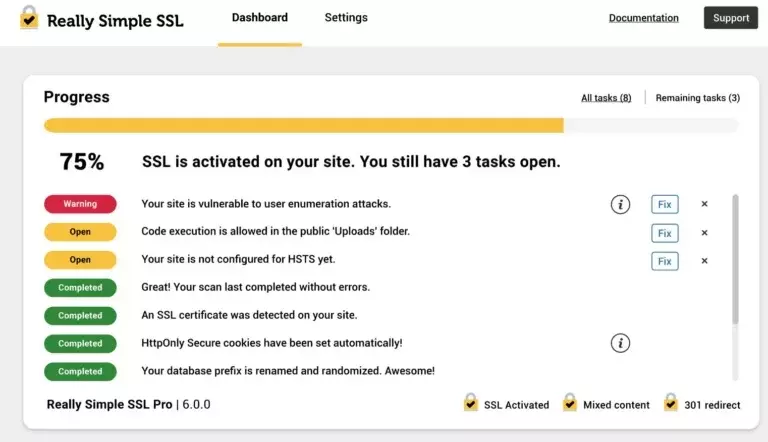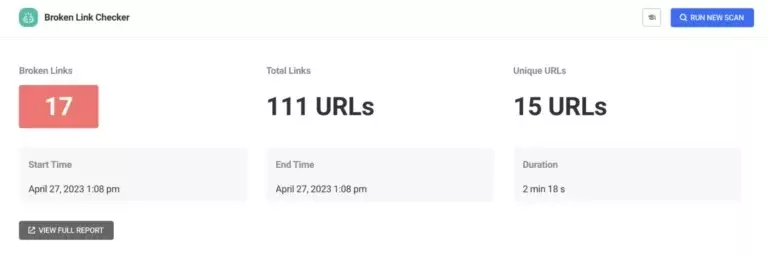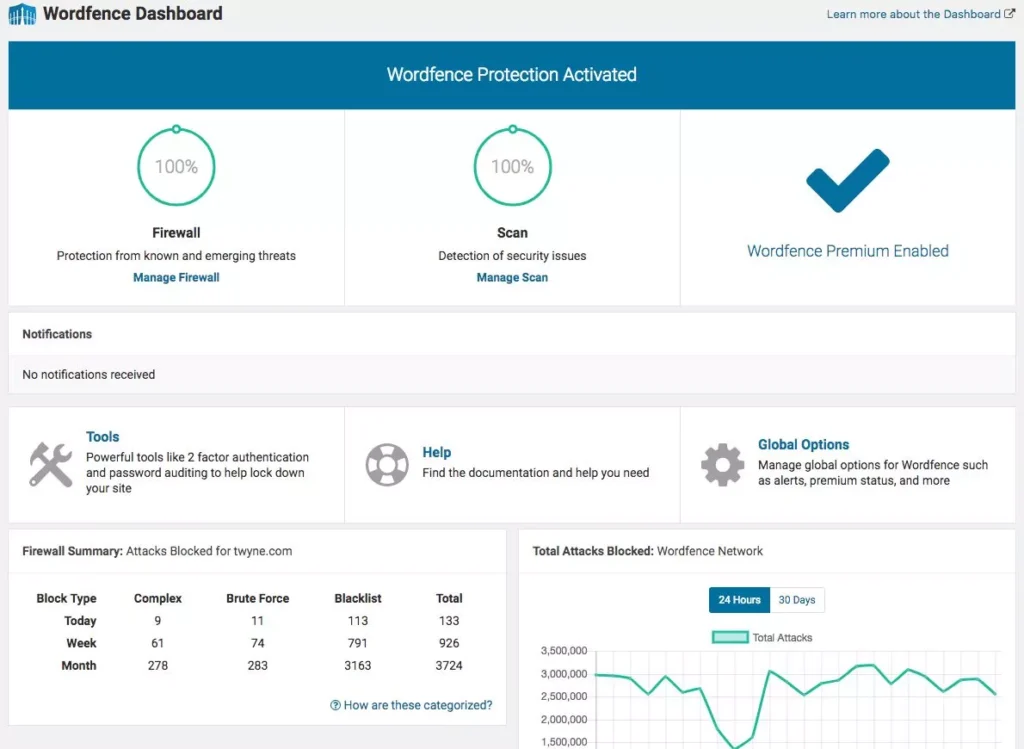Top 18 WordPress Blog Plugins for Increased Visibility

Running a successful blog isn’t just about publishing top-quality content. There’s the promotional part, like social media and building links through email outreach, too.
And let’s not forget the importance of responding to comments and emails you receive from your readers. That’s all about building relationships with your audience.
There’s another key component of a popular blog, though: ensuring a great user experience (UX) for your readers.
Don’t stress.
I’m not suggesting you become an expert in UX to keep your customers satisfied. I’ve got a much simpler idea than that. It’s the good old WordPress blog plugin.
If you know anything about WordPress plugins for blogs, you’ll know there’s one for almost every function. Stopping spam, optimizing SEO, and creating contact forms. I could go on.
I can’t promise to fix every usability issue, but you’ll surely fix the most common problems found on many WordPress sites.
Ready?
Then here’s WordPress blog plugin #1.
1. Yoast SEO

With five million plus installs, plenty consider Yoast one of the best SEO plugins for WordPress.
The plugin helps blog owners optimize their blogs, helping to increase search engine rankings and online visibility.
Yoast’s features include on-page SEO analysis, XML map generation, and schema markup.
The free plugin gives you the tools you need to gain online visibility, manages technical SEO, and provides access to five free courses.
The paid package starts at $99 and offers a load more features, including keyword optimization, content and quality link suggestions, and full access to the Yoast SEO academy. It’s recently added an AI headline and meta-description generator, too.
2. Akismet

Spam. Don’t you just love it? Unfortunately, we don’t just get spam in our inboxes. Even if you only post semi-regularly, it won’t be long before your comments section fills with unwanted comments and links.
There’s an easy fix for it, though.
Enter the WordPress blog plugin Akismet. It’s highly effective at preventing spam and comes pre-installed in WordPress.
Aksimet is awesome for content moderation as it allows WordPress site admins to review the comment and either delete or publish it.
You need an Askimet API tool to use it, which is free for personal accounts.
3. Really Simple SSL

Adding a layer of security to your blog is essential.
Really Simple SSL is a WordPress blog plugin that encrypts data sent between the user’s browser and the server.
Its intuitive interface removes the learning curve and allows you to configure your SSL settings, and set up an HTTPS redirect with a single click.
The plugin also detects vulnerabilities in plugins and themes, and WordPress Hardening lets you address any weaknesses.
You can run server health checks, too.
4. Contact Form 7

Contact information is one of the key components of establishing trust and the credibility of your brand. It’s such a basic aspect, yet the lack of a contact form is one of the top reasons a visitor leaves a site.
Contact Form 7 is the one of the most popular free WordPress plugins, with five million+ active installs. It makes creating contact forms a breeze with easy customizations, Akismet spam filtering, and reCAPTCHA.
It’s easy to install and set up. However, if you’re looking for something more professional, I recommend you try WPForms.
5. WPForms

WPForms is one of the best plugins for a WordPress blog if you looking for a form builder. It’s in the top seven WordPress plugins of all time and comes packed with features.
The basic subscription starts at $39.60 (special offer at the time of writing) and is suitable for one site.
The package includes unlimited forms, submissions, and users. Additional features include form templates, spam protection, and privacy compliance.
You’ll get plenty of customizations, too, like multiple page forms, custom thank you pages, and page builder support.
6. Site Kit by Google

If you feel your site lacks metric insights, you can download Google’s Site Kit WordPress blog plugin.
It installs a dashboard for tracking Google features such as analytics, Seach Console, Page Speed Insights, and Adsense.
You can install the plugin from within WordPress or via manual installation.
Using WordPress, you’ll just need to visit “Plugins” and then “Add New”. Search for Google’s Site Kit, click “Install Now,” then “Activate.” Keep in mind you need to have administrator role access to use this plugin and link it to your Google account. If there are multiple admins, each will need to connect to their own Google account to use the plugin.
For manual installation, follow the instructions below:
- Upload the “google-site-kit” folder to your “/wp-content/plugins/” directory.
- Visit Plugins and activate Google Site Kit.
- Connect Site Kit to your Google account.
Easy, right?
7. Google Analytics Dashboard for WP

This hugely popular WordPress blog plugin has over one million users.
Google Analytics was undoubtedly the most powerful free analytics tool for marketers to get website data, decode user behavior, and make strategic decisions to enhance their consumers’ user experience.
But logging into the dashboard separately every day can eat your time.
How about getting an overview of the key stats on your website right on your WordPress dashboard?
That’s what the Google Analytics Dashboard for WP plugin can do for you.
It supports Google Analytics 4 and shows you metrics like the website’s number of users, bounce rates, organic searches, pages per session, etc.
You can even understand your website traffic behavior and channels in real-time.
The WordPress blog plugin also comes with handy e-commerce reports to clearly understand how your different traffic channels are performing.

It also offers event tracking and performance details of every post/page on your website.
8. W3 Total Cache

Our attention spans are shrinking.
Hence, slow-loading websites have become incredibly frustrating for users. They no longer wait around for the complete website to load.
That can be a problem for blog owners.
Statistics show that the conversion rate for a one-second page load is almost 40 percent. Every second of delay in loading time after that negatively impacts your conversion rate by up to 50 percent.

You get it. You need to speed things up.
W3 Total Cache is one of the best WordPress plugins for blogs if you want to eliminate re-downloading of redundant data on the user’s’ browser. It can create static caches for each page so that it is dynamically loaded on each page load.
This significantly decreases page load time for the user by saving server resources. Total Cache even integrates with Content Delivery Networks (CDN) to further decrease the page load time.
The W3 Total Cache plugin is a bit complex to configure
However, once set, it can shave off a significant number of seconds from your website’s loading time. Translation? Getting people to stay on your page– and increasing your search engine ranking.

Aside from speeding up loading times, W3 Total Cache enhances SEO and Core Web Vitals and promises a “10 x improvement in overall site performance.”
9. WP Smush.it

One of the major components of optimizing your website is trimming down the heavy images.
Images contribute massively to page load speed. As the name suggests, WP Smush.it optimizes your images for faster loading time by reducing their size without affecting image quality.
It also has a bulk smush option to process up to 50 images from your media library simultaneously.
You can also set up automatic smush so that every image is resized and optimized as per your specifications when it’s uploaded.

10. WPtouch Mobile Plugin
It’s simple.
Optimizing your website for mobile visitors is no longer a choice; it’s a necessity. And you’ll be pleased to know there’s a WordPress blog plugin for that.
WPtouch Mobile is an easy-to-use plugin for making your WordPress site mobile-friendly (go for the paid version for enhanced themes and templates). If you don’t have a responsive WordPress theme or don’t want to change your site design, then this plugin comes in handy.
You can customize the colors, fonts, navigation menus, and other features for your mobile website without adding any code.

You can even convert your website into a mobile app. And transform your website into a native mobile experience. The WordPress blog plugin is on the list of Kinsta’s recommendations for WordPress mobile solutions as it’s the most updated and supported.
11. Broken Link Checker

If you’ve got a big blog, you know all about broken links or link rot.
Content becomes irrelevant, webpages get taken down, and redirects happen constantly.
In Ahref’s case, it found that 26.9 million out of its 174.3 million links no longer existed.
Obviously, broken links equate to a bad user experience for your readers.
That’s why you need the Broken Link Checker WordPress blog plugin.
It monitors links in your posts, pages, custom fields, and blogrolls and detects broken links 20 times faster than other WordPress blog plugins. You’ll receive notifications about the broken links through the dashboard or an email.
You’re also presented with suggestions for every broken link, so you can update the broken links inside your article from the dashboard.

If you’ve got a big blog, you know all about broken links or link rot.
Content becomes irrelevant, webpages get taken down, and redirects happen constantly.
In Ahref’s case, it found that 26.9 million out of its 174.3 million links no longer existed.
Obviously, broken links equate to a bad user experience for your readers.
That’s why you need the Broken Link Checker WordPress blog plugin.
It monitors links in your posts, pages, custom fields, and blogrolls and detects broken links 20 times faster than other WordPress blog plugins. You’ll receive notifications about the broken links through the dashboard or an email.
You’re also presented with suggestions for every broken link, so you can update the broken links inside your article from the dashboard.
12. CrazyEgg Heatmap Tracking

Data about your audience drives insights about their behavior, referring sources, popular pages and more.
However, a better way to visualize your data can be using Heatmaps.
They show areas with more activity as hotter than areas with lesser activity. With an actual understanding of how your visitors interact with your site and design, you can improve their user experience.
Let me introduce you to one of the most popular heatmap tools in the market, which I co-founded: CrazyEgg Heatmap Tracking. The free WordPress blog plugin is an effortless way to add CrazyEgg’s tracking script to your site. You’ll need to sign up with CrazyEgg to get the most out of it, and there’s a free trial.
It offers mouse cursor heatmaps, scroll heatmaps, and another powerful feature, confetti heatmaps. It allows you to divide your heatmap traffic from different traffic sources and analyze how they behave differently.
You can even track different websites with just one account.
13. Better Click to Tweet
If you engage visitors with your content, then it can lower your bounce rate, up your engagement numbers, and increase your reach.
Creating small clickable click-to-tweet snippets inside your content is a great way to enhance interaction.
And the Better Click to Tweet WordPress blog plugin allows you to use a simple shortcode for making a highlighted text tweetable (without leaving your website).

Offering such pre-filled messages makes your article more appealing and also increases the number of tweets you get in the post.
If you want to remove the “via @YourTwitterHandle” from your tweet and have a longer quote, then the plugin allows you to do so.

If you know CSS, then you can design custom templates too.
14. WP Live Chat Support

One of the most effective ways to offer customer satisfaction is live chat.
26 percent of survey responders prefer live chat. It triumphs over other forms of customer service and support, including phone and email.
WP Live Chat support offers small businesses the ability to connect with their website visitors for free.
Setting it up is fairly straightforward and it comes with plenty of options to customize layout and appearance.
If you’re offline, you can also let your visitors leave a message.
15. Jetpack

The Jetpack WordPress blog plugin is ideal if you want to make your site faster and more secure.
Security features include real-time backups, malware scanning, and easy restore. It also guards against spam and provides downtime/uptime monitoring.
The backup features are extensive, too, giving you automatic backups, one-click restoration, and the ability to manage website migrations.
Other features include a web application firewall, brute force protection, security scans, and a spam blocker.
16. Pretty Links

Add purpose to your links with the Pretty Links WordPress blog plugin.
Pretty Links doesn’t just make your links look better aesthetically. It lets you shorten links to include your own domain name and share it on and off your WordPress site.
In addition, you can track the number of link clicks and unique clicks per link and allow one-click link sharing.
Pretty Links also supports redirects and enables you to generate customized reports to see your clicks per day.
17. weMail

Looking for a WordPress management system for your emails? Then why not try weMail?
This WordPress blog plugin comes with an inbuilt email template builder and lets you send newsletters, collect leads, display subscription forms, and offers analytics.
With an easy set-up and user-friendly interface, weMail allows you to send out email campaigns quickly and easily. There’s an email-sending limit of 3,000 contacts included in the free version of the platform, but once you’ve accrued more than that, there are paid options to manage your campaigns from there
18. Wordfence Security

WordPress theme builder Colorlib estimates that 13,000 WordPress sites get hacked daily. If you want to limit your chances of being one of them, you’ll need some security plugins.
Wordfence Security provides a full suite of security tools for WordPress sites. It has everything you’d expect from an all-around security product: secure login, a firewall, malware scanning, and two-factor authentication.
There are four subscriptions to choose from. The basic package is free, and paid subscriptions start from $119 monthly.
FAQs
How to Add Plugins to a WordPress Blog?
Go to your WordPress dashboard and click on “Plugins.” Enter the name of the plugin or the function into the search bar. Select the plugin you want, choose “Install now,” wait for the installation to complete, and then click “Activate.”
What Plugins Do I Need for WordPress?
It varies depending on what you want to do with your blog. For instance, if you need to accept payments, you’d want a WordPress blog plugin like WP Simple Pay. However, one essential WordPress blog plugin for visibility is Yoast. You’ll probably want Akismet for spam and a contact form plugin, too.
An SSL and social media plugins for easy sharing are also among the basics.
How Do WordPress Plugins Work?
A WordPress blog plugin is not much different from a smartphone app. Although WordPress is a powerful enough platform on its own, its plugins give it the additional functions and features to customize it for your needs.
They integrate seamlessly with WordPress to provide functions like selling digital downloads, setting up an online store, or running a membership site.
Conclusion
Whether you’re about to start a WordPress blog or have one that’s well-established, the platform is a popular CMS with powerful search engine optimization functionalities. Plugins enable even further optimization.
Using a WordPress blog plugin gives you the additional functionality and customization that you need to give your site a major upgrade.
It’s not just about providing a better user experience, either.
By adding some of the must-have plugins for WordPress to your blog, you can optimize your SEO and gain better visibility.
WordPress plugins also cover you in many ways, like adding security, blocking spam, and providing contact forms.
Don’t feel you need to install them all, though. Download the essentials (like security, SEO, and contact form plugins), then decide which WordPress plugins for blogs suit your needs.
Next, combine them with the best WordPress themes for blogs for a fantastic-looking, highly functional blog.




